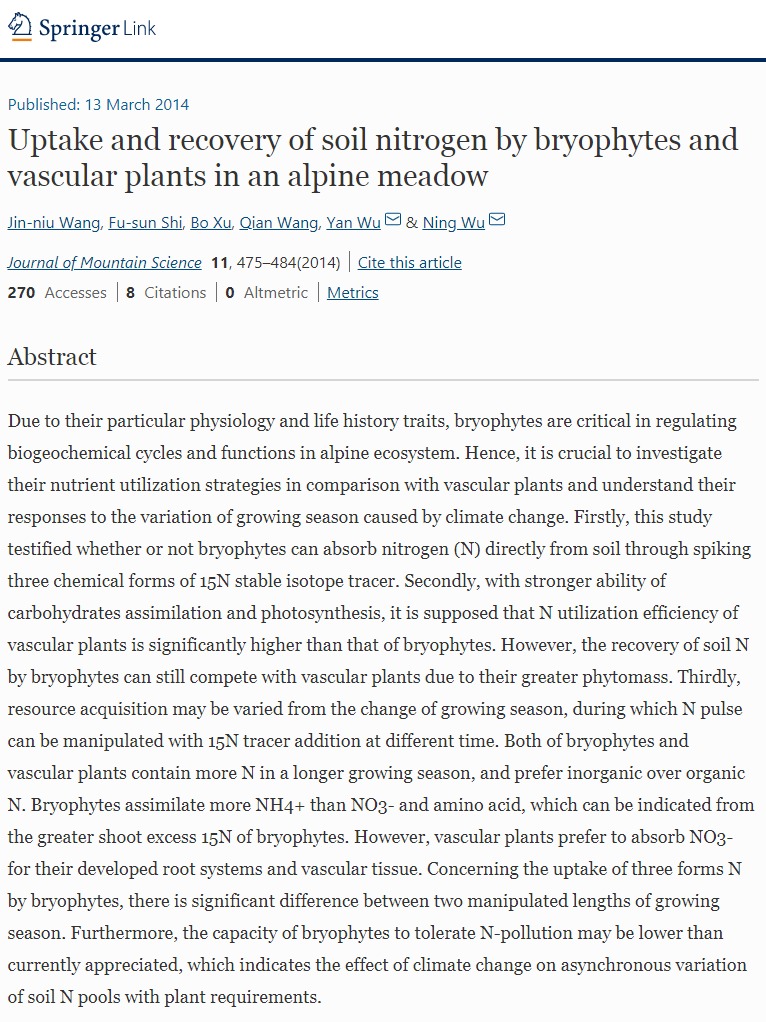
Due to their particular physiology and life history traits, bryophytes are critical in regulating biogeochemical cycles and functions in alpine ecosystem. Hence, it is crucial to investigate their nutrient utilization strategies in comparison with vascular plants and understand their responses to the variation of growing season caused by climate change. Firstly, this study testified whether or not bryophytes can absorb nitrogen (N) directly from soil through spiking three chemical forms of 15N stable isotope tracer. Secondly, with stronger ability of carbohydrates assimilation and photosynthesis, it is supposed that N utilization efficiency of vascular plants is significantly higher than that of bryophytes. However, the recovery of soil N by bryophytes can still compete with vascular plants due to their greater phytomass. Thirdly, resource acquisition may be varied from the change of growing season, during which N pulse can be manipulated with 15N tracer addition at different time. Both of bryophytes and vascular plants contain more N in a longer growing season, and prefer inorganic over organic N. Bryophytes assimilate more NH4+ than NO3- and amino acid, which can be indicated from the greater shoot excess 15N of bryophytes. However, vascular plants prefer to absorb NO3- for their developed root systems and vascular tissue. Concerning the uptake of three forms N by bryophytes, there is significant difference between two manipulated lengths of growing season. Furthermore, the capacity of bryophytes to tolerate N-pollution may be lower than currently appreciated, which indicates the effect of climate change on asynchronous variation of soil N pools with plant requirements.